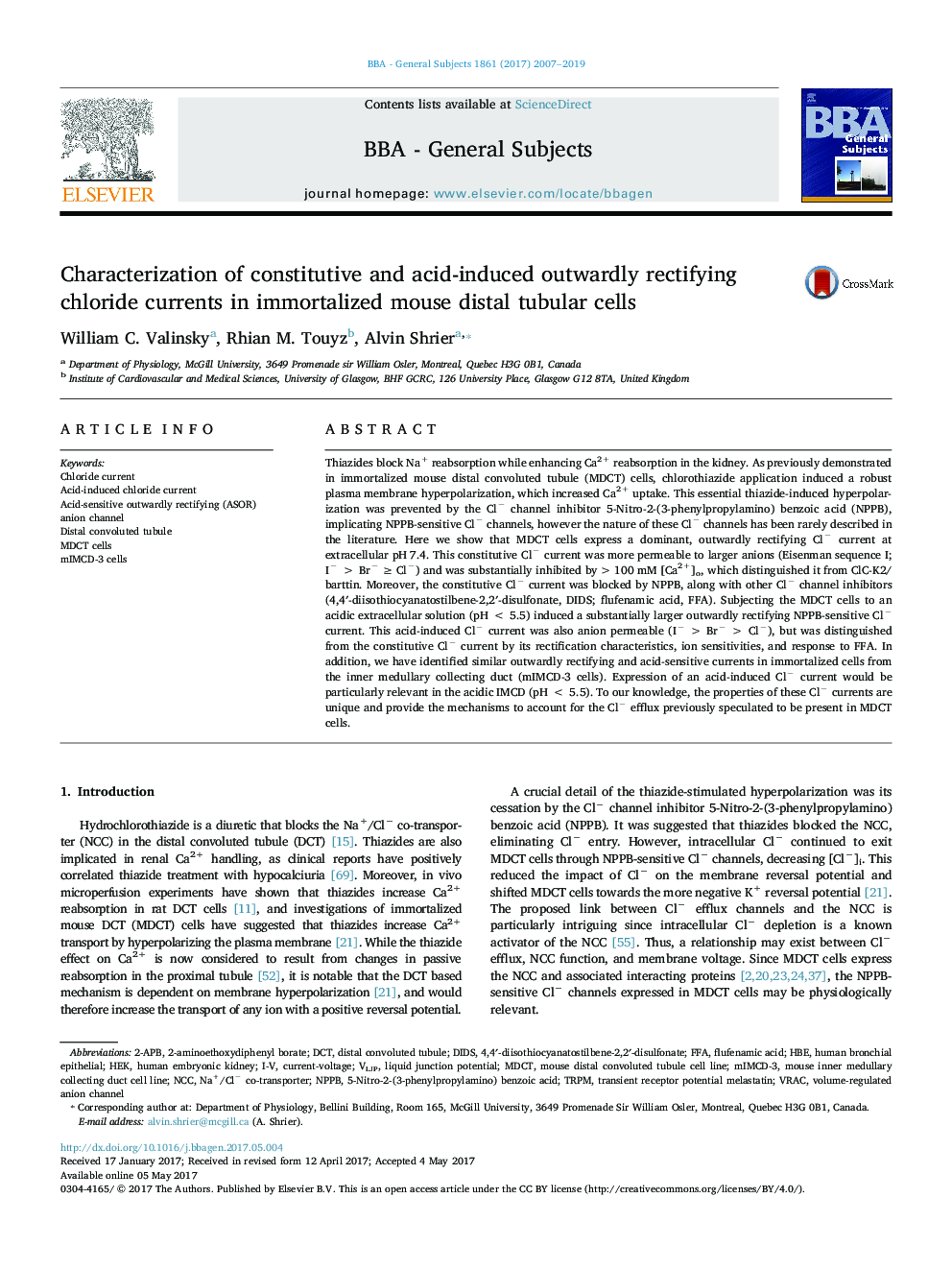| Article ID | Journal | Published Year | Pages | File Type |
|---|---|---|---|---|
| 5507898 | Biochimica et Biophysica Acta (BBA) - General Subjects | 2007 | 13 Pages |
â¢MDCT cells express a dominant NPPB-sensitive Clâ current at pH 7.4.â¢The constitutive Clâ current (pH 7.4) does not arise from ClC-K2/barttin.â¢MDCT cells also express an acid-induced NPPB-sensitive Clâ current (pH < 5.5).â¢Both the constitutive and acid-induced Clâ currents are unique.â¢mIMCD-3 cells express currents with similar biophysical properties.
Thiazides block Na+ reabsorption while enhancing Ca2+ reabsorption in the kidney. As previously demonstrated in immortalized mouse distal convoluted tubule (MDCT) cells, chlorothiazide application induced a robust plasma membrane hyperpolarization, which increased Ca2+ uptake. This essential thiazide-induced hyperpolarization was prevented by the Clâ channel inhibitor 5-Nitro-2-(3-phenylpropylamino) benzoic acid (NPPB), implicating NPPB-sensitive Clâ channels, however the nature of these Clâ channels has been rarely described in the literature. Here we show that MDCT cells express a dominant, outwardly rectifying Clâ current at extracellular pH 7.4. This constitutive Clâ current was more permeable to larger anions (Eisenman sequence I; Iâ > Brâ â¥Â Clâ) and was substantially inhibited by > 100 mM [Ca2+]o, which distinguished it from ClC-K2/barttin. Moreover, the constitutive Clâ current was blocked by NPPB, along with other Clâ channel inhibitors (4,4â²-diisothiocyanatostilbene-2,2â²-disulfonate, DIDS; flufenamic acid, FFA). Subjecting the MDCT cells to an acidic extracellular solution (pH < 5.5) induced a substantially larger outwardly rectifying NPPB-sensitive Clâ current. This acid-induced Clâ current was also anion permeable (Iâ > Brâ > Clâ), but was distinguished from the constitutive Clâ current by its rectification characteristics, ion sensitivities, and response to FFA. In addition, we have identified similar outwardly rectifying and acid-sensitive currents in immortalized cells from the inner medullary collecting duct (mIMCD-3 cells). Expression of an acid-induced Clâ current would be particularly relevant in the acidic IMCD (pH < 5.5). To our knowledge, the properties of these Clâ currents are unique and provide the mechanisms to account for the Clâ efflux previously speculated to be present in MDCT cells.
